Of the seven bridges that cross the majestic Rhine river in Cologne, the Hohenzollernbrücke is the most famous, thanks in part to its location near the cathedral. It is also the oldest bridge, built between 1907 and 1911.
Roman bridges
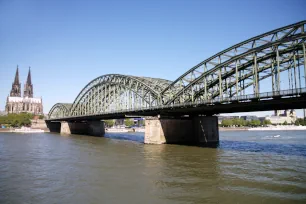
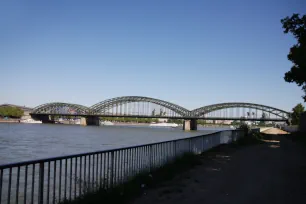
During Roman times, the Rhine river formed the northeastern border of the Roman Empire. The width and strong current of the river provided an engineering challenge for the construction of a bridge. This didn’t deter the Roman dictator Julius Caesar, and between 53 and 55 BC his army built two bridges across the river to facilitate his war against Germanic tribes.
The first bridge that crossed the Rhine in Cologne was built around 310 AD, during the reign of Constantine the Great, and connected the city with a newly built military camp across the river in Deutz.
The wooden bridge was about 420 meters long. Some of the foundations of this early bridge are on display in the Römisch-Germanisches Museum.
Dombrücke
After the fall of the Roman Empire it would take another 1500 years before a new bridge was constructed here. In 1822 a wooden pontoon bridge was built at the site of the current Hohenzollernbrücke. The bridge rested on a series of barges and was raised several times a day to allow the passage of boats.
In 1855 the pontoon was replaced with the Dombrücke (Cathedral Bridge), the first permanent bridge since Roman times. This bridge, a lattice truss bridge with three spans, opened in 1859. It had two railway tracks and two lanes for car-traffic. Monumental neo-Gothic towers marked the entrances to the bridge.
Hohenzollernbrücke
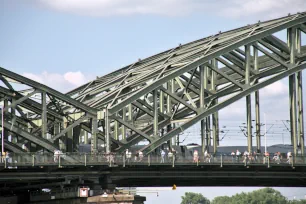
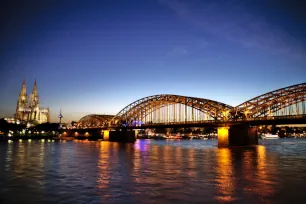
By the early twentieth century the bridge had become too small to handle the increasing railway traffic and the construction of a new, larger bridge started in 1907. The new bridge, named Hohenzollernbrücke after the Hohenzollern dynasty, was inaugurated in 1911 by emperor Wilhelm II. The bridge had four railway tracks as well as a two lane road and was supported by three monumental iron truss arches. Massive Neo-Roman portals with large towers were built on either side of the bridge, decorated with equestrian statues of kings and emperors.
In 1945, at the end of World War II, the retreating German army blew up all bridges across the Rhine, including the Hohenzollern bridge. Just three years later the bridge was partially repaired and in 1959 the Hohenzollernbrücke was completely reconstructed. The imposing entrances to the bridge were demolished in 1958 and were not replaced.
The bridge today
Between 1985 and 1988 the bridge was renovated and widened. It is now a rail bridge with six tracks, and due to its location near the main train station about 1200 trains pass here every day. A pedestrian walkway allows visitors who don’t mind the constant rumbling of train traffic to cross the Rhine for a beautiful view of the skyline of Cologne.
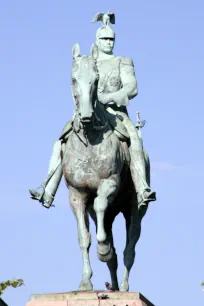
Due to its location near the cathedral, the Hohenzollernbrücke is one of the most photographed landmarks in Cologne. The bridge is especially beautiful at night, when the large arches are illuminated.
Statues
On either side of the bridge are two equestrian statues on large pedestals. The statues on the Cologne side of the bridge depict Emperor Frederick III and Emperor William II. Both were created by the Prussian sculptor Louis Tuaillon. On the Deutz side of the bridge are statues of King Frederick William IV, created by Gustav Blaeser, and Emperor William I, created by Friedrich Drake.
- Next: Hahnentorburg
- More Sights & Attractions in Cologne

